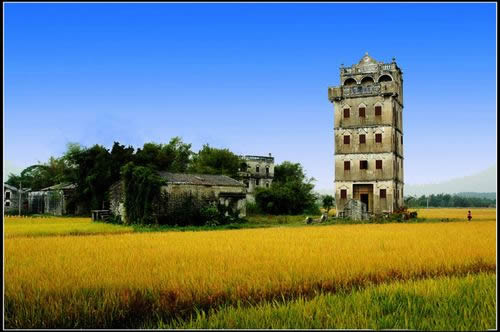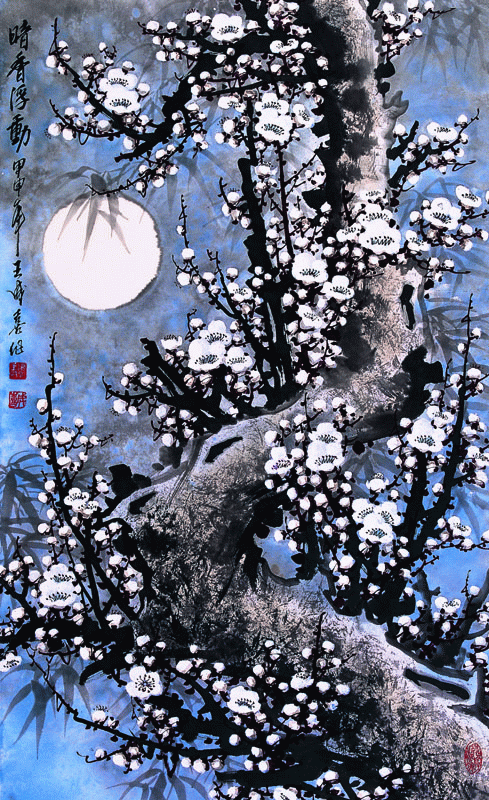I can't remember how old I was on the day when the news exploded in the class. A boy, one of my classmates in The 25th Primary School, his home was destroyed by a fire.
In those days, all of us had no pocket money, and we had no idea about donation, or goodwill cards. What we could do was to write an awkward letter to him, and then, gathering on the sidewalk opposite of his fire-burned home, gazing at the two carbonize window frames at the third floor of the building. All our curious were satisfied, and all our excitement was calmed to sigh, including the regret for missing the grand spectacle of the fire.
I was there, among these boys and girls, but I was distracted by the figure on the stone carving above the two black holes, which were the former windows. I was wondering whether the figure on the stone was a lion or a monkey. When I looked around, I found every building along this street was individuated by heavy and complicated sculpture decoration.
This was my first time to notice these beautiful building in my hometown, Foshan, one of the four famous ancient town aged over thousand years in China.
In the romantic years, I liked to sit on the backseat of my boyfriend’s bicycle, and cruised around the town to view the attractive old buildings. At this age, I was able to identify the Byzantine, Romanesque, Gothic, Baroque, and Rococo elements from the visuals of Fu Lu Shou (three Chinese lucky gods), and Ba Xian Guo Ha (The Eight Immortals Cross The Sea) carved in the poles, roofs, and arches.
This kind of building, usually, had two floors, while some of them may have three layers. The first floor was used as store, and the upper floors reached out above sidewalks, looking like they were riding above the sidewalk, so they were called Qi Lou (riding building).
Partially, Qi Lous were built around one hundred years ago, between the Qing Dynasty and the period of Republic of China, by the overseas Chinese who returned home after getting fame or money from Canada, Australia, or U.S. This is why they could creatively compounded the western style with Chinese traditional elements.
The Overseas Chinese, with historic significance, characterize the Guangdong culture; and Qi Lou is the symbol for this historic era and generation.
Foshan's Qi Lou may be not as delicate as the others in Guangzhou or somewhere else, but it surely was a part of the life style in the passed years.
After the boyfriend became a husband, and I became a mother, occasionally, I would go back to this old town to show my daughter what I was interested when I was a kid. To my disappointed, each time I found that the Qi Lous were being licked up by the glass-curtain wall buildings and giant shopping malls. The local style was cover with the modern building by the government’s Old City Rebuilding Program.
Situation in other area, for example, Kai Ping, a small county nearby my home town, might be better. The local government was inspired by the 1,833 Diao Lous (watch towers) scattering in the 16 townships on the plain, and set up Tourism Development Plan, so that some major historical and cultural sites are under protected at the national level. In this reason, Qi Lous, however, which were not as brilliant as Diao Lous, were fortunately brought into protection in this area.
 Diao Lou
Diao Lou
No matter destroying or protecting as tourism resource, Qi Lous and Diao Lous, these one hundred age’s historic architecture are going far away from people’s daily life, to say nothing of the architecture over hundreds or thousands years, like Forbidden City, Great Wall, . Is there anything to do with common people, excepting they occasionally buying one or two tickets to visit these sites? How these people can concern something that they could not see, touch, feel, and breath everyday? If I ask an Egyptian, Greek, Hindu, or Chinese, “Do you love to live with traditional architecture?” Am I sure to get a positive answer? Apartments may be the better choice for them, I guess.
Trees will die without earth and water, even if they were as tall as reaching the sky.
Cultural heritage can not survive if it only stays in tourism places and museums, where what we can see is heritage culture's corpse, dead culture.

Qi Lous in Kai Ping County








1 comment:
hello Dawn!
Post a Comment